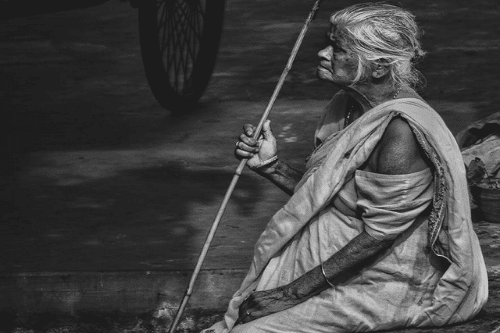Bone is a dynamic organ that serves mechanical and homeostatic functions. It undergoes a continual self-regeneration process called remodelling. Remodelling removes old bone and replaces it with new bone. This regenerative process occurs in distinct areas of bone known as bone metabolic units (BMUs) (Riggs et al. 2002). Within each BMU bone formation by osteoblasts and bone resorption by osteoclasts is coupled tightly in a delicate balance to maintain bone mass and strength to resist deformity. With aging this balance shifts in a negative direction, favouring greater bone resorption and less bone formation. This combination of bone mass deficiency and reduction in strength ultimately results in osteoporosis and fractures (Demontiero et al. 2012). Osteoporosis is defined as deteriorationin bone mass and micro-architecture, with increasing risk to fragilityfractures (Raisz&Rodan, 2003).
The Department of Foods and Nutrition, The MaharajaSayajirao University of Baroda conducted evidence-based research on theknowledge and practices of the pre-geriatric and geriatric male population ofurban Vadodara on bone health and found that the nutrient intake of allsubjects were less than the RDA in terms of protein, iron, and calcium withnon-frequent consumption of calcium and vitamin D rich sources. Thus NHE tool was developed covering aspects like physical activity, dietary patterns, theimportance of sun exposure along with calcium and vitamin D3 supplements, andshowed significant improvement in the bone health knowledge of the subjects.
The study where BMD was determined along with theprevalence of osteopenia and osteoporosis in the elderly population of urbanVadodara found that the subjects have significantly less mean height, hipcircumference, and WHR with 51-75% RDA of calcium. The magnitude ofosteoporosis significantly increases with age prominently in females. Interventionresults showed that when subjects were given a high dose of calcium (1000 mg/day) and vitamin D3 (2000 IU/day) with a mega-dose of vitamin D3= 60,000 IU / weekfor eight weeks helped in improving bone health if constrictions forexercise is there whereas for long term therapy calcium (1000 mg/ day) and vitamin D3 (500 IU/day) with a mega-dose of vitamin D3 = 60,000 IU /week for eight weeks along with weight-bearing exercises is recommended (Chauhan et al.2015).
A research study on elderly men and women of urbanVadodara was screened for poor bone health. Bone health status (BMD) wasassessed using an ultrasound-based bone mass density machine. Supplementationof calcium and vitamin D3 with weight-bearing exercise for three monthsshowed significant improvement in BMD as compared to subjects who receive theonly dose of calcium and vitamin D3. This was also associated withimprovement in their locomotor problems, walking speed, standing balancing, andimproved physical endurance.
Menopausal transition causes deterioration of bone healthand an increase in bone resorption thus resulting in porous bones. For thispurpose postmenopausal women were selected from urban Vadodara where one groupreceived calcium and vitamin D3 supplementation along with three months 60,000IU of D3. The second group received Nutrition Health Education (NHE)with a pictorial booklet on sunlight exposure, physical activity, diet, and supplementation followed by reinforcement using a pamphlet and bone healthseminar. After three months of intervention, it was found that NHE along with calciumand vitamin D3 supplementation and an action-oriented approach is necessary to improvise bone health of menopausal women thus improving their quality of life.The study indicated a high prevalence of obesity in subjects with a low intakeof calcium as per Recommended Dietary Allowances (RDA). Fat intake was higherand a positive correlation was seen between weight and BMD.
Take-home messages for optimum bone health in the elderly one need to select food rich in calcium like low-fat milk, low-fat dairy products like yogurt, homemade curd, paneer, custard, low sugar soft niger seedchikki/foxnut (makhana) kheer, tofu, calcium-enriched soymilk, kidney beans,cow peas, moth beans, lentils, whole red gram, whole Bengal gram, whole greengram, whole black gram, and whole horse gram, almonds or its milk, gingelly seeds (black/brown/white), dried figs, vegetable leaves like amaranth/ bathua/ fenugreek/ colocasia/mustard/ raddish/ drumstick/ knol-khol, spiceslike cloves, cardamom, cumin seeds, coriander seeds and sardines as a good choice.Instead of staple rice and wheat replace some days with millets like ragi,amaranth seeds (Rajgira) which are calcium-rich. For vitamin D fortified milkand its sources, cereals (wheat flour/rice), edible vegetable oil; salmon, sardines,mackerel, egg, liver along with exposure to sunlight for at least 45 minutesbetween 10.00 am to 02.00pm in India should be followed. Weight-bearing exercise on achair with correct posture and balance under expert supervision should beinitiated with warm-up workout and relaxation along with the practice ofwalking and gardening has to be taken care offfor good bone health with ageing.
Written By: Komal Chauhan and Neha Garg
Professors, Department of Foods and Nutrition, The Maharaja Sayajirao University of Baroda, Vadodara, Gujarat







